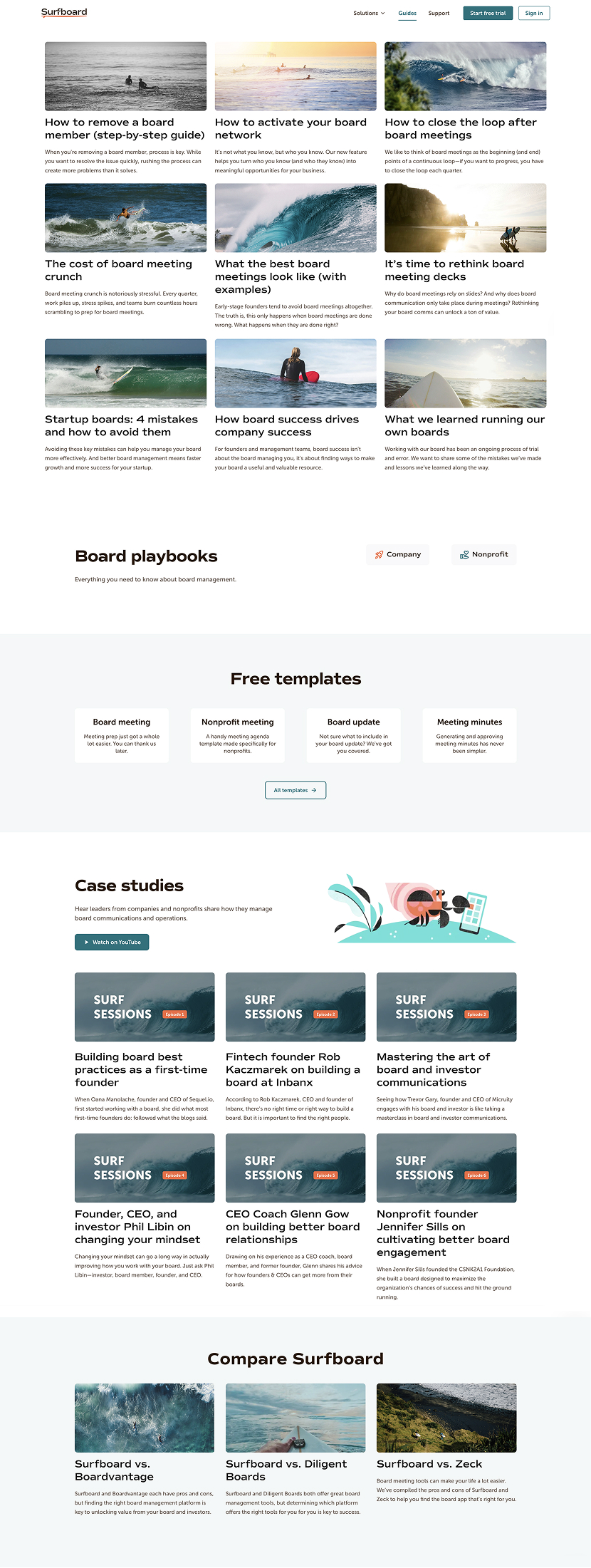Surfboard
As a small startup with a lean team, we needed to think creatively about how to expand the Surfboard brand without a big budget.
That meant organic content was our bread and butter.
Our goal was to create *valuable* content. Resources that weren’t just sales tactics, but that *actually* helped our prospective users. Things they would turn to (and yeah, ideally, share) over and over again.
We also had to overcome the challenges inherent in the board management space. Which mostly comes down to the fact that software solutions are so far downstream in the board management process, that a platform like ours wasn’t even on the radar for a huge chunk of our audience.
This required a patient approach. We had to create our own audience. Coach them at the beginning of their journey, foster their growth gradually over time, and offer a software solution only when they were truly ready for one.
I started by establishing a brand voice and tone for the company, creating a style guide that would allow us to align all of our communications behind cohesive messaging.
I then used those new guidelines to develop all new content for the website, overhauling the strategy and design of every user flow.
Once the website was up and running, I turned my attention to the product itself. I produced all of the UI copy for the app, making sure it didn’t just align with our voice and tone, but also provided a highly usable experience.
For both the website and the product, I also advised on accessibility best practices, ensuring that all users received an equitable experience when interacting with our brand.
Once the basics had been established, I turned my sites outward, looking for ways to expand the brand’s reach.
I created in-depth resource guides on board governance which is, historically, an incredibly opaque topic. Nobody likes to talk about what happens in their board meetings, which makes managing a board for the first time feel a whole lot harder than it needs to.
The guides I created were designed to give away the secret recipe for free, so to speak. This not only helped us foster authentic appreciation and loyalty with our audience, but also positioned us as the most knowledgeable and credible voice in the space.
From there, I expanded into blog content, sharing our own behind-the-scenes experiences and lessons learned. I also started producing video content, interviewing startup founders to learn how they managed their boards. Again, the goal was to make board management practices more transparent and therefore more approachable. Oh, and I cross-posted all of these interviews as podcasts so we could reach a wider audience.
My content strategy culminated in the creation of a six-week, asynchronous board management course designed to help people master governance best practices. I researched, wrote, and produced the entire course myself, and launched to a beta cohort with overwhelming interest. We not only maxed our enrollment for our first cohort, but were able to create a waitlist for future cohorts.
The success of the paid course not only helped us cultivate future users for the product, but also diversified the company’s revenue stream, adding an entire service branch to the formerly product-only business.


